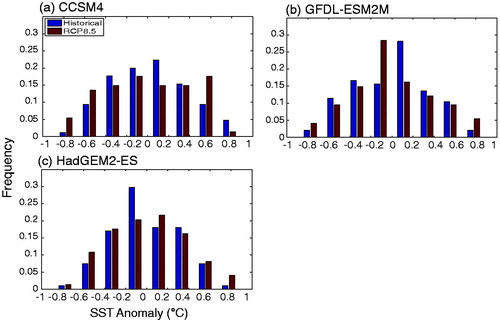Figures & data
Fig. 1. (a) Geographical location of the São Paulo Cantareira water reservoir and the INMET climate stations in São Paulo State, (b) annual cycle of rainfall for 2013/14 and long-term mean for the period 1979–2004 from GPCP over São Paulo (averaged over the region 50°W to 45°W and 25°S to 20°S), (c) water storage volume (hm3) of Cantareira reservoir system for the period 1982 to early 2015 and (d) annual (July–June) and wet season (December, January and February) rainfall measured at the INMET stations in the State of São Paulo from 1961 to 2014.
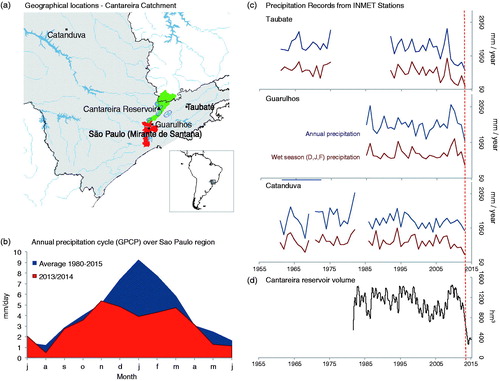
Table 1. Simulations carried out with HadAM3.
Table 2. List of CMIP5 climate models and ensemble outputs used in this study, simulation period, and research groups responsible for their development.
Fig. 2. Annual and seasonal inflow into the Cantareira reservoir system for the period 1931–2015 based on SABESP records.

Fig. 3. Time latitude diagram of meridionally averaged (a) precipitation anomaly (GPCP), (b) Geopotential height anomaly (NCEP/NCAR), (c) Outgoing longwave radiation anomaly (NOAA) and (d) SST anomaly for the period July 2011 to December 2015. The precipitation has been averaged over São Paulo, i.e. 50°W to 40°W, whereas the other three variables have been averaged over the south Atlantic Ocean. Geopotential height and OLR have been averaged over 65°W to 40°W and SST has been averaged over 45°W to 10°W. The monthly anomalies of the climatic fields have been calculated with respect to the mean of the respective months during the whole period i.e. 1979–2004.
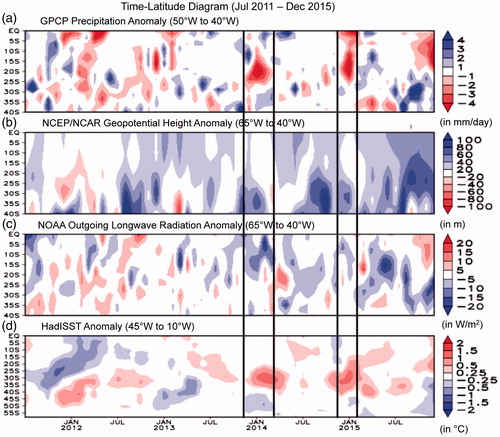
Fig. 4. December to February (DJF) rainfall anomaly (in mm/day) and SST (in °C) for 2013/14, 2014/15 and 2015/16. The rainfall has been adopted from GPCP (Adler et al., Citation2003) and the SST is from ERA-Interim (Dee et al., Citation2011). The top panel (a–c) shows the rainfall anomalies while the bottom panel (d–f) shows the SST anomalies. The geographical location of São Paulo city has been marked as green plus sign in all the subplots. We have chosen a box over the South Atlantic Ocean, which has been used to identify the similar occurrence of SST anomaly pattern in the future climate.
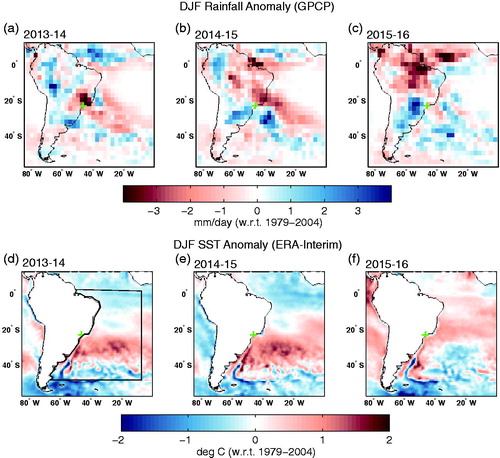
Fig. 5. Top panel: Moisture flux transport anomaly and SST anomaly (°C) obtained from ERA-Interim for (a) 2013/14 and (b) 2014/15 with respect to the mean of the respective fields during 1979–2004. The moisture flux transport has been plotted as vector field while the SST anomaly has been plotted as shaded. Bottom panel: moisture flux anomaly divergence for (c) 2013/14 and (d) 2014/15.

Fig. 6. Frequency distribution of DJF 2013/14 rainfall anomaly over the São Paulo region (25oS to 20oS and 50oW to 45oW) from HadCM3 simulations with observed land cover and observed GHG. Total 31 numbers of ensemble simulations were carried out by perturbing the initial conditions.
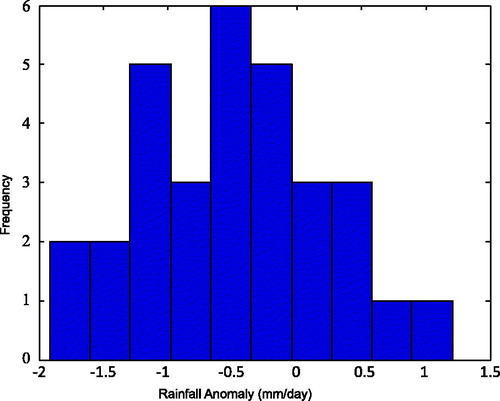
Fig. 7. DJF rainfall anomaly (mm/day) for 2013/14 (right panel) with respect to 1979–2004 from observations and HadAM3 simulations. Left and right columns represent observed and model simulated rainfall anomaly for 2013/14 respectively. (a) Observed rainfall from GPCP rainfall, b) simulation result of HadAM3 with fixed land cover (1870) and CO2 fixed at preindustrial level (Scenario 1), (c) simulation results using HadAM3 with reconstructed time varying land cover (Meiyappan and Jain, Citation2012) and CO2 fixed at preindustrial level (Scenario 2) and (d) simulation results using HadAM3 with reconstructed time varying land cover (Meiyappan and Jain, Citation2012) and observed GHGs increasing over time (Scenario 3). In this figure, the selection of the ensembles is based on criteria when the ensemble member simulates the rainfall anomaly over the São Paulo region (25oS to 20oS and 50oW to 45oW) less than –1 mm/day. Then the composite of these ensembles have been calculated and plotted above.
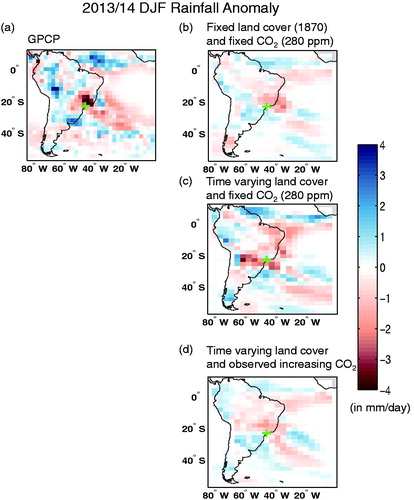
Fig. 8. (a) Pattern correlation of SST anomaly from ERA-Interim of DJF 2013/14 over south Atlantic (region shown in Fig. i.e. 60°S to 0 and 42°W to 10°W) with SST anomaly in the other years. Red lines denote the years when the correlation is greater than or equal to 90th percentile and blue lines denote the years when the correlation is less than or equal to 10th percentile. (b) Frequency distribution of pattern correlation coefficients of ERA-Interim SST anomalies for 1979–2015.
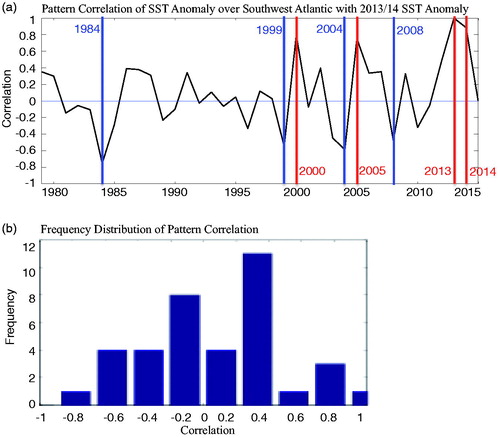
Fig. 9. DJF rainfall anomaly (GPCP), SST and moisture flux transport anomaly (ERA-Interim) during the years having correlation value greater than or equal to 90th percentile () of the study period viz. 2000–01, 2005–05, 2013–14 and 2014–15. Top panel: rainfall anomaly for the years 2000–01 (a), 2005–06 (b), 2013–14 (c) and 2014–15 (d). Bottom panel: SST (in shaded) and moisture flux transport (in vector) anomaly for the years 2000–01 (e), 2005–06 (f), 2013–14 (g) and 2014–15 (h).

Fig. 10. Left panel represents the pattern correlation coefficients of SST anomaly of DJF 2013/14 from ERA-Interim with SST anomaly of other years for simulations with CCSM4 (a), GFDL-ESM2M (b) and HadGEM2-ES (c) for the period 1870–2100. Right panel represents the rainfall anomaly over the São Paulo region (25oS to 20oS and 50oW to 45oW) from CCSM4 (d), GFDL-ESM2M (e) and HadGEM2-ES (f) for the period 1870–2100. The blue and red curves represent historical and future periods in RCP8.5 scenario respectively. Black vertical lines in indicate the years when the correlation value is more than 90th percentile and in , the black vertical line shows the rainfall anomalies for the corresponding years.
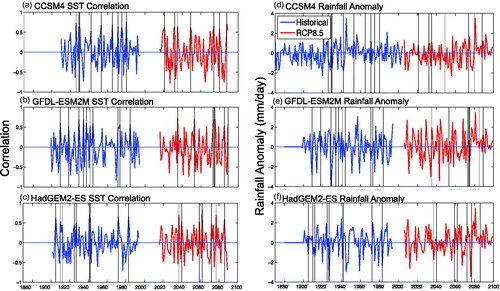
Fig. 11. Frequency distribution (normalized by division by total number of years) of pattern correlation coefficients (shown in ) of SST anomalies for the simulations with CCSM4 (a), GFDL-ESM2M (b) and HadGEM2-ES (c) for the period 1870–2100. The blue and red bars represent historical and future periods in RCP8.5 scenario respectively.
